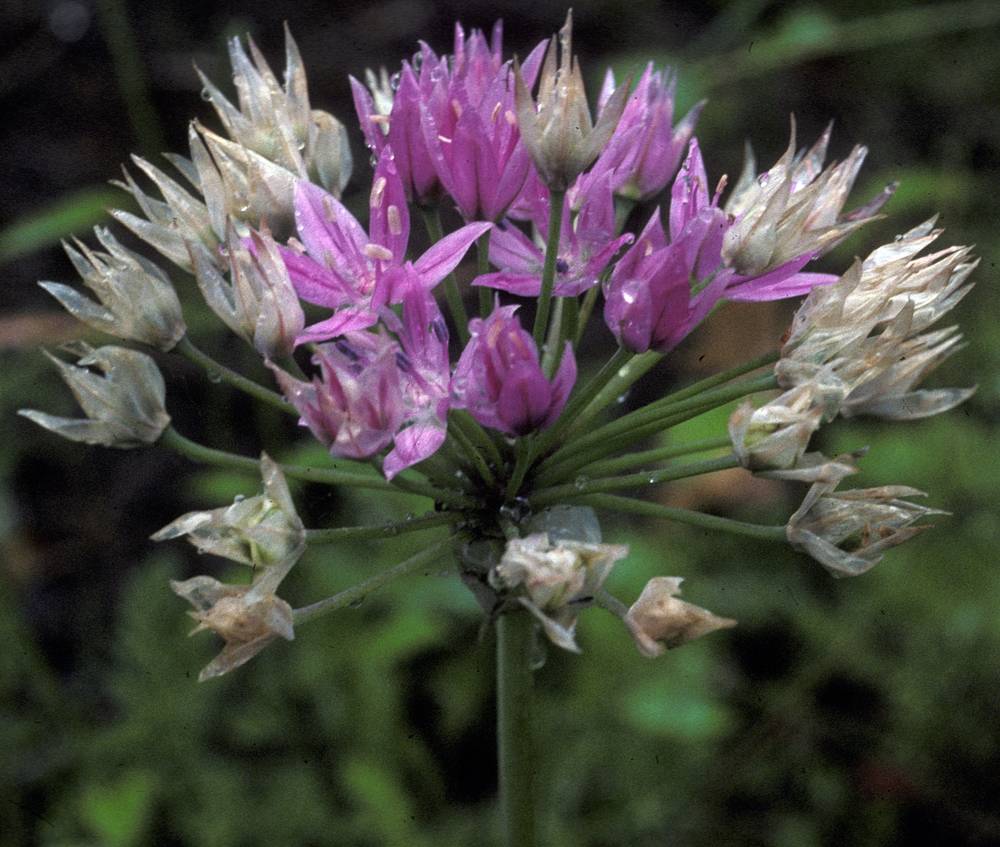Allium unifolium
one-leaf onion
solitary, replaced annually by new bulbs borne terminally on secondary rhizome;
rhizomes 1–3, conspicuous; to 5 cm; smooth, parent bulbs disappearing by anthesis except for still-functional roots and bulb coat; ovoid to oblique-ovoid;
outer coats not enclosing bulbs, delicately cellular-reticulate, membranous;
cells more or less rectangular; without fibers.
persistent, green or withering from tip at anthesis, 2–3;
blades solid, flattened, sometimes carinate, keeled dorsally; more or less falcate, 18–50 cm × 4–10 mm;
margins entire.
persistent; solitary; erect; solid; terete, 20–80 cm × 2–7 mm.
persistent; erect; loose, 15–35-flowered, hemispheric;
pedicels 15–40 mm;
spathe bracts 2.
11–15 mm;
tepals spreading, obovate to ovate, unequal, bright pink or rarely white;
apex acute to obtuse or emarginate; inner shorter and narrower than outer;
stamens included;
ovary crestless;
stigma scarcely thickened, unlobed or obscurely 3-lobed.
=14.
Allium unifolium
Wet clay soil, usually along streams, sometimes on serpentine. Flowering May–Jun. 50–100 m. Est. CA. Native?
Because of its large, attractive inflorescence, A. unifolium has entered the bulb trade and is widely cultivated. Our Curry County population may be native, but others are likely introduced. This species is unique in our flora in producing long, thick rhizomes each year.
Nick Otting, Richard Brainerd, Barbara Wilson



